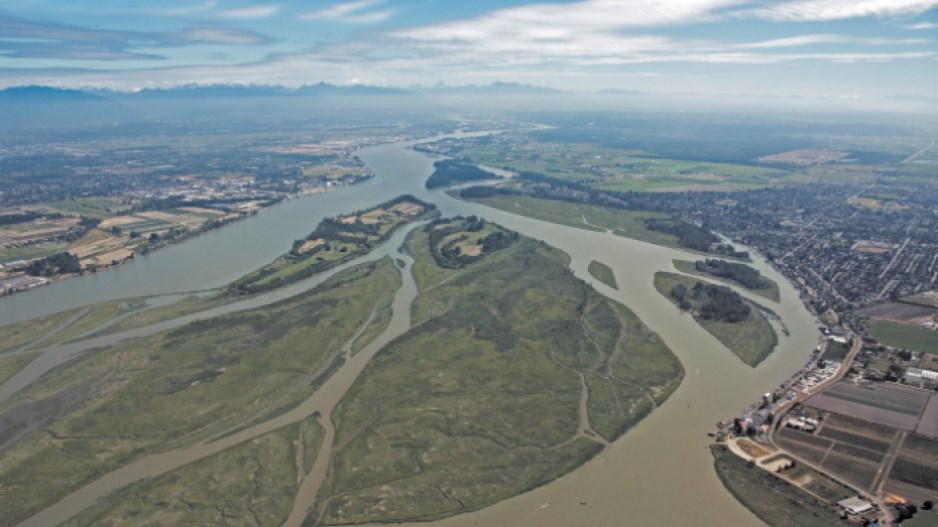More money needs to be poured into the Fraser River to prevent catastrophic flooding and maintain the river as an economic driver.
That’s the argument from a coalition of Metro Vancouver municipalities and Chambers of Commerce, who released a report today detailing the economic sectors — from shipping, forestry and concrete making to tourism and commercial fishing — that depend on the Fraser. The report tallies the value of economic development along the Fraser at $50 billion, and says that could all be at risk if steps are not taken now to improve infrastructure along the river.
The report also calls on the federal government to contribute regular funds for dredging and dike maintenance.
A pair of separate reports released by the provincial government last week said rising sea levels caused by climate change means that all but one of the 15 dikes from Hope to Mission are now too low to withstand a very high flood.
Because of climate change, a 50-year flood could now be similar in magnitude to what was previously experienced every 200 to 500 years.
“One of the concerns is that in an El Nino year, with a storm surge, even with the current sea level you could have a breaching of the dikes in the [Fraser River] delta,” Dave Park, author of the Chambers of Commerce report, told Business in Vancouver.
Any flooding that blocked a major highway or rail line would impact Vancouver’s port, said Park, and could result in a bottleneck that would affect not only the provincial economy, but shipments from farther afield such as grain and potash.
Park’s report also calls for a regular source of funds to dredge secondary channels on the Lower Fraser. After the federal government stopped funding a regular dredging program in 1998, many of the secondary channels in Metro Vancouver have been allowed to fill up with sediment. This has affected tourism and commercial fishing in communities like Ladner and Steveston.
In the past, the cost of maintaining the Fraser River has been shared by all three levels of government. That will continue to be the case, wrote Greig Bethel, a spokesman for the Ministry of Forests, Lands and Natural Resource Operations to BIV in an email.
While costs for raising the dikes have not yet been calculated, wrote Bethel, a 2012 report estimated the cost of raising the dikes downstream of the Port Mann to be $9.5 billion.
The province is continuing to work with federal and local governments on “a funding regime that is acceptable to all parties,” wrote Bethel.




